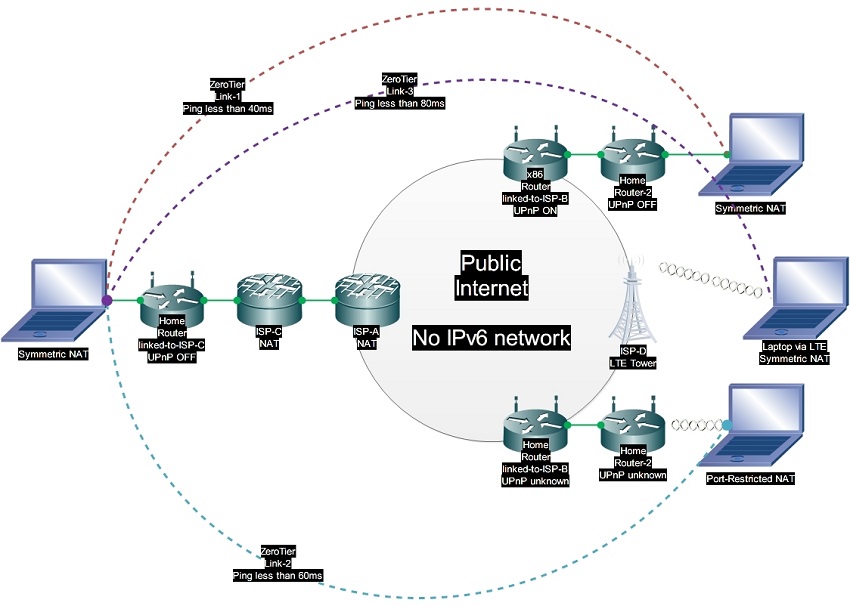
30 Aug What is symmetric NAT?
Imagine you’re at home, about to join an online gaming session with friends, when suddenly, you encounter a mysterious connectivity issue. Your headset’s mic isn’t working, and you’re left wondering why you can’t hear your teammates. Welcome to the world of networking and the curious phenomenon of Symmetric NAT. In this article, we’re diving deep into what Symmetric NAT is, why it matters, and how it affects your online experiences. This article is organized by Techconnectmagazine.com.
The Network Enigma
Network Address Translation (NAT) has long been the unsung hero of the digital realm, allowing multiple devices within a local network to share a single public IP address. This efficient process enables seamless communication with the outside world and forms the backbone of our online interactions.
Understanding NAT: The Basics
At its core, NAT works as a mediator between your private local network and the public internet. It assigns unique internal IP addresses to devices within your home network and translates these addresses into a single public IP when information travels to and from the internet. When it comes to NAT, there are different types such as full cone vs symmetric nat, which have their own unique features and purposes.
The Different Flavors of NAT
NAT comes in various flavors, each serving a distinct purpose. From the straightforward Static NAT to the versatile Dynamic NAT, these variations offer flexibility and security to network administrators and casual users alike.
Enter Symmetric NAT: A Unique Twist
Now, let’s shine a spotlight on Symmetric NAT. Unlike its counterparts, Symmetric NAT adds a twist to the translation process. It assigns a unique external port for each session initiated from within the network. This means that if you open a browser tab, play an online game, and use a messaging app simultaneously, each of these activities will have a different external port.
The Symmetric NAT Process Unveiled
Imagine you’re hosting a game and inviting friends to join. When their devices communicate with your server, Symmetric NAT kicks in. It assigns a specific external port for each friend, creating a unique pathway for their data to reach your server and vice versa.
When Symmetric NAT Causes Trouble: VoIP and Gaming Woes
Symmetric NAT’s uniqueness comes with a downside. While it’s excellent for preserving security and preventing unwanted inbound connections, it can wreak havoc on real-time applications like Voice over Internet Protocol (VoIP) calls and online gaming. Discover How Can I Improve My 2.4 Ghz Signal?
Working Around Symmetric NAT: Solutions and Alternatives
Fret not, for there are workarounds. Techniques like Universal Plug and Play (UPnP) and port forwarding can help mitigate Symmetric NAT’s impact. These methods allow devices within your network to communicate more effectively with the outside world.
Symmetric NAT vs. Other NAT Types: A Comparative Analysis
To truly appreciate Symmetric NAT, let’s compare it to other NAT types. We’ll explore how Symmetric NAT stacks up against its counterparts, shedding light on when each type shines and stumbles.
The Security Angle: Is Symmetric NAT a Guardian or a Gatecrasher?
Symmetric NAT’s stringent control over inbound connections raises questions about its impact on security. We’ll delve into whether Symmetric NAT acts as a safeguard against cyber threats or inadvertently becomes a barrier to legitimate network activities.
The Future of NAT: Evolving Landscapes
As technology advances, the world of networking evolves. We’ll gaze into the crystal ball and speculate about the future of NAT, considering how emerging trends might shape the way we navigate the digital landscape.
Conclusion
In the labyrinthine world of networking, Symmetric NAT stands as a unique player, adding complexity and security to our online interactions. While it can pose challenges, understanding its intricacies empowers us to find solutions that enhance our digital experiences.
FAQs (Frequently Asked Questions)
Q1: Can I disable Symmetric NAT on my home network?
A: In most cases, you can’t disable Symmetric NAT completely. However, you can use techniques like port forwarding to work around its limitations.
Q2: Does Symmetric NAT slow down my internet connection?
A: Symmetric NAT itself doesn’t significantly impact your internet speed. Other factors like network congestion and bandwidth limitations play a more substantial role.
Q3: Is Symmetric NAT used only in home networks?
A: No, Symmetric NAT is used in various environments, including corporate networks and public Wi-Fi hotspots.
Q4: Can Symmetric NAT prevent cyberattacks?
A: Symmetric NAT adds a layer of security by hiding internal IP addresses. However, it’s not a foolproof solution against all types of cyber threats.
Q5: How can I improve online gaming performance with Symmetric NAT?
A: To enhance gaming performance, consider using gaming VPNs or optimizing your network settings to minimize the impact of Symmetric NAT.

Sorry, the comment form is closed at this time.